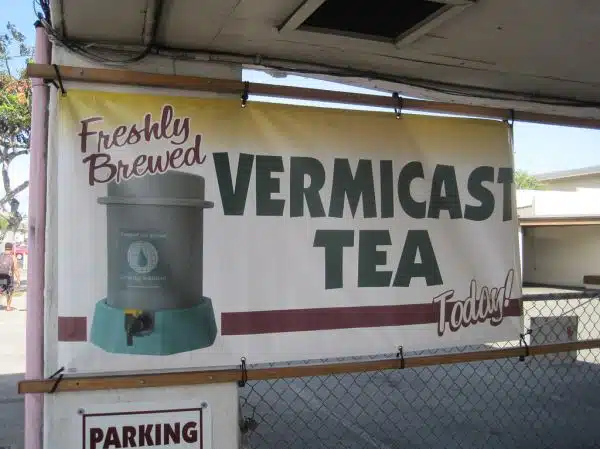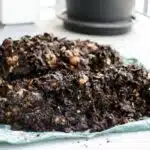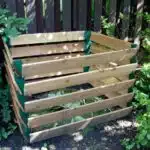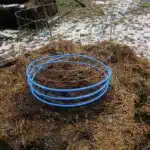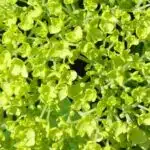Vermicomposting is a sustainable option for managing organic waste and producing nutrient-rich compost for plants. It involves the use of earthworms to break down organic matter, creating vermicompost, which is a valuable soil amendment that can improve soil structure, water-holding capacity, and nutrient content. Vermicompost tea is a liquid extract derived from vermicompost, which can be used as a foliar spray or soil drench to provide plants with essential nutrients and beneficial microorganisms.
Making vermicompost tea is a simple process that requires minimal equipment and can be done at home. However, there are several factors to consider when making vermicompost tea to ensure its effectiveness and safety. In this article, we will discuss the benefits of using vermicompost tea for plant growth, the steps involved in making it, and some tips on how to optimize its quality and application. Whether you are an experienced gardener or just starting out, learning how to make vermicompost tea can help you achieve healthier and more productive plants while reducing your environmental impact.
The Benefits Of Vermicompost Tea For Plant Growth
Vermicompost tea is a powerful organic fertilizer that offers numerous benefits to plants. It is made by steeping vermicompost (worm castings) in water to extract the nutrients and beneficial microorganisms. The resulting liquid can then be used as a foliar spray or soil drench to promote plant growth, improve soil health, and increase resistance to pests and diseases.
One of the main benefits of vermicompost tea is its ability to enhance plant growth. The nutrients in worm castings are readily available for plants to absorb, and the soluble nature of the tea allows for quick uptake. This results in healthier, more productive plants with stronger root systems and increased yields. Moreover, research has shown that vermicompost tea can improve the quality of fruits and vegetables by increasing their nutrient content.
Another application of vermicompost tea is in hydroponics systems, where it can provide essential nutrients to plants grown without soil. The tea serves as an organic alternative to synthetic fertilizers, which can harm aquatic life if they leach into waterways. By using vermicompost tea instead, urban farmers can grow healthy crops while minimizing their environmental impact.
Overall, understanding the benefits and applications of vermicompost tea is crucial for anyone interested in sustainable agriculture practices. By utilizing this natural fertilizer, farmers and gardeners alike can achieve better yields while reducing their reliance on synthetic chemicals that can damage both human health and the environment.
Understanding Vermicomposting And Its Importance
Vermicomposting is a natural process of breaking down organic waste with the help of worms. It is an inexpensive and eco-friendly method of producing high-quality compost that can be used in organic farming. This process is simple, and it does not require any special equipment or technical expertise.
To start vermicomposting, all you need to do is create a worm bin where the worms can thrive. The bin should be filled with layers of damp bedding materials such as shredded newspaper or cardboard, mixed with food scraps. The worms will consume the food scraps and bedding material, breaking them down into nutrient-rich compost over time.
The importance of vermicomposting in organic farming cannot be overstated. It helps to reduce waste by converting organic matter into valuable fertilizer that can be used to nourish crops without the use of harmful chemicals. In addition, vermicompost contains beneficial microorganisms that promote healthy soil and plant growth, making it an essential component for sustainable agriculture practices.
Transition: Now that we understand the process and importance of vermicomposting, let’s explore how to choose the right worms for this process.
Choosing The Right Worms For Vermicomposting
When it comes to vermicomposting, choosing the right worms is essential for success. The selection of worm species can greatly affect the quality and quantity of compost produced. Some worm species are better suited for certain types of waste materials than others, so it’s important to consider which type of waste you’ll be composting before selecting your worms.
One popular worm species used in vermicomposting is Eisenia fetida, also known as red wigglers. These worms are highly efficient at breaking down organic matter and thrive in temperatures between 60-80°F. They prefer a moist environment with plenty of oxygen and can consume up to half their weight in food each day. Another commonly used species is Lumbricus rubellus or European nightcrawlers, which are larger and more robust than red wigglers. They have a higher tolerance for colder temperatures and can break down tougher materials such as cardboard and newspaper.
When selecting your worm species, it’s important to also consider their habitat requirements. Worms need bedding material that provides moisture retention and good aeration, such as shredded paper or coconut coir. They also require a suitable container or bin that allows for proper drainage and air circulation. By providing your worms with the proper habitat conditions, they will be more likely to thrive and produce high-quality compost for your garden.
Moving on from worm species selection, the next step in vermicomposting is preparing your vermicompost for tea production. This involves harvesting the finished compost from your bin and steeping it in water to create a nutrient-rich liquid fertilizer. But before we dive into that process, let’s take a closer look at how to properly care for your worms and maintain their habitat conditions for optimal compost production.
Preparing Your Vermicompost For Tea Production
To prepare your vermicompost for tea production, you will need to use specific composting techniques to ensure that your final product is of high quality. First, it’s essential to make sure that your vermicompost is mature enough for tea production. This means that the worms have broken down the organic material into a fine and crumbly texture, and there are no large chunks left in the compost.
Next, you will need to prepare your vermicompost by mixing it with water to create a solution that can be used as a liquid fertilizer. You should aim for a ratio of one part vermicompost to four parts water. This mixture should then be left to steep for 24-48 hours before use. Once ready, strain the mixture through cheesecloth or another fine cloth to remove any remaining solids.
Organic fertilizers such as vermicompost tea provide many benefits over chemical fertilizers. They increase soil fertility without harming the environment and promote healthy plant growth. In addition, using organic fertilizers helps reduce waste by recycling food scraps and other organic materials back into the soil. With proper preparation techniques, vermicompost tea can be an excellent resource for gardeners looking for a natural way to nourish their plants.
- To ensure your vermicompost is mature enough, look for signs such as earthworms moving away from fresh food scraps.
- Use rainwater or filtered tap water instead of chlorinated water when making your vermicompost tea.
- Avoid overfeeding your worms before harvesting their castings.
- Consider adding additional nutrients such as molasses or kelp meal to enhance the nutrient content of your vermicompost tea.
The equipment you’ll need for making vermicompost tea includes simple items such as a five-gallon bucket, air pump with tubing and airstone, cheesecloth or fine mesh strainer, and pH test strips. These tools are relatively inexpensive and can be found at most garden supply stores or online. With these simple steps, you’ll be well on your way to brewing high-quality vermicompost tea that will provide your plants with the nutrients they need to thrive.
The Equipment You’ll Need For Making Vermicompost Tea
Ah, yes. You’re ready to make vermicompost tea! But first, let’s discuss the equipment you’ll need to have on hand.
First and foremost, you’ll need a container for brewing your tea. This can be anything from a five-gallon bucket to a large trash can, but it must have a lid to keep out unwanted pests. You’ll also want an air pump and aquarium tubing to aerate the mixture and increase its microbial activity. A mesh bag or cheesecloth is necessary for straining out any solid materials once the tea is brewed.
Next, you’ll need some sort of vermicomposting system from which to harvest your worm castings (the main ingredient in vermicompost tea). This can be as simple as a small worm bin or as complex as a large-scale commercial operation. Whatever system you choose, make sure that your worms are healthy and happy before harvesting their castings.
Lastly, you’ll need some ingredients for your tea itself. In addition to your worm castings, you may want to add some other organic matter such as compost or seaweed extract. Molasses is often used as a food source for the microbes in the tea, while humic acid can help increase nutrient uptake in plants.
Now that you’ve got all your equipment ready, it’s time to move on to the preparation process itself.
Understanding The Science Behind Vermicompost Tea
Vermicompost tea is a liquid solution made from steeping vermicompost in water, which can then be applied directly to soil and plants. The tea contains beneficial microbial life, minerals, and organic matter that can improve the overall health and fertility of soil. Vermicompost tea can lead to increased water retention, improved soil structure, and better nutrient availability for plants. The use of vermicompost tea is a great way to reduce the need for chemical fertilizers while still providing the necessary nutrition to plants.
What Is Vermicompost Tea
Vermicompost tea is a liquid fertilizer that is produced through the process of steeping vermicompost in water. This organic elixir is an excellent source of nutrients for plants, providing them with a balanced blend of macronutrients and micronutrients. Vermicompost tea can be used as a foliar spray or soil drench to promote healthy plant growth and improve soil health.
The production process of vermicompost tea involves mixing vermicompost with water, aerating the mixture, and allowing it to steep for 24-48 hours. During this time, beneficial microorganisms present in the vermicompost multiply and release nutrients into the water, creating a nutrient-rich solution that can be applied directly to plants. The production process requires minimal effort and can be easily replicated at home or on a larger scale.
The benefits of using vermicompost tea are numerous. It provides plants with essential nutrients that are easily absorbed, enhances soil structure and fertility, increases resistance to pests and diseases, and improves overall plant health. Furthermore, vermicompost tea is an eco-friendly alternative to chemical fertilizers that can harm the environment. By incorporating vermicomposting practices into our gardening routines, we can create a sustainable system that benefits both our plants and our planet.
Benefits Of Vermicompost Tea
The production and application of vermicompost tea have been gaining popularity in recent years due to its numerous benefits for plants and the environment. One significant advantage of using vermicompost tea is its ability to provide plants with a balanced blend of macronutrients and micronutrients that are easily absorbed. This organic elixir can be applied through foliar spray or soil drench methods, making it a versatile fertilizer that can address various plant needs.
Aside from its nutrient content, vermicompost tea also enhances the structure and fertility of soil. As beneficial microorganisms multiply during the steeping process, they create a diverse microbial community that promotes healthy soil activity. This leads to improved water retention, increased nutrient availability, and reduced soil compaction, ultimately resulting in better plant growth. Additionally, using vermicompost tea as an alternative to chemical fertilizers reduces environmental harm caused by synthetic fertilizers’ runoff and leaching.
Finally, incorporating vermicomposting practices into gardening routines is an eco-friendly way to improve overall plant health while caring for our planet. Vermicompost tea’s application methods are easy to perform at home or on a larger scale, making it accessible for both small-scale gardeners and commercial growers. By utilizing this sustainable system in our gardens, we can promote healthy plant growth while reducing our ecological footprint on the planet.
The Different Types Of Vermicompost Teas You Can Make
Now that we have a basic understanding of the science behind vermicompost tea, let’s explore the different types of vermicompost teas you can make. Tea brewing is an essential aspect of vermicomposting, and it involves steeping worm castings in water for a specific period. The resulting liquid is then used as a fertilizer to enhance plant growth. There are several variations of this process, each with its unique nutrient composition.
The first type of vermicompost tea is made by steeping worm castings in water without any additives. This process creates a basic tea that contains macro and micronutrients such as nitrogen, phosphorus, potassium, calcium, magnesium, and iron. The second type is aerated compost tea, which involves adding oxygen to the mixture using an air pump. This method increases microbial activity in the solution and enhances its nutrient content. The third type is called compost leachate, which is obtained by collecting excess water from a worm bin. This liquid contains high levels of soluble nutrients and minerals.
When creating a balanced vermicompost tea recipe, it’s crucial to consider nutrient variation. Different plants have varying nutrient requirements at different stages of growth, so it’s vital to adjust your recipe accordingly. For instance, nitrogen-rich teas are suitable for vegetative growth stages while phosphorus-rich teas are ideal for flowering or fruiting stages. Additionally, you should also consider the quality of your worm castings because they directly affect the nutrient composition of your tea.
By understanding the different types of vermicompost teas available and considering nutrient variation when creating your recipe, you can produce high-quality fertilizers that will boost plant growth significantly. Vermicomposting offers an eco-friendly way to produce organic fertilizers while reducing waste production in our communities.
Creating A Balanced Vermicompost Tea Recipe
A balanced vermicompost tea recipe is essential to maximize the benefits of this organic fertilizer. Vermicompost tea is rich in essential nutrients that help nourish plant growth and improve soil health. The key to creating a balanced recipe is using the right ingredients in the proper ratios.
The first ingredient for a balanced vermicompost tea recipe is high-quality compost, which serves as the base for the tea. Compost should be well-aged, matured, and free from pathogens and weed seeds. Next, you will need to add water to your compost and let it steep for several hours or overnight. Other ingredients such as molasses, seaweed extract, rock phosphate, and fish emulsion can be added to provide additional nutrients.
The benefits of vermicompost tea are numerous and include improved plant growth, increased soil fertility, and better moisture retention. This organic fertilizer also helps reduce plant diseases and pests while promoting beneficial microorganisms in the soil. By following a balanced vermicompost tea recipe with quality ingredients, gardeners can reap all these benefits in their gardens while reducing their ecological footprint. In the next section, we will discuss how to optimize your vermicompost tea for maximum nutrient benefits by adjusting brewing times, adding amendments like kelp meal or worm castings, and more.
Optimizing Your Vermicompost Tea For Maximum Nutrient Benefits
- Quality vermicompost is an essential ingredient for making an effective vermicompost tea; it should be of the highest possible grade, free of contaminants, and closely examined for evidence of pests or diseases.
- The correct balance of nutrients is essential for your vermicompost tea to be effective; the optimal balance should take into account the type of plants you are growing and the particular nutrients they need.
- Brewing techniques for vermicompost tea can vary depending on the desired result, from a simple mix of vermicompost and water to more complex recipes.
- Brewing in an aerated environment is ideal for vermicompost tea, as oxygen levels can greatly affect nutrient availability.
- Temperature control is also important, as the steep time and temperature can affect the composition and effectiveness of the vermicompost tea.
- Finally, filtering the tea before application is a good way to ensure that no unwanted material is present in the mixture.
Choosing Quality Vermicompost
When it comes to optimizing your vermicompost tea for maximum nutrient benefits, the quality of the vermicompost you use is paramount. Choosing high-quality vermicompost ensures that your tea will contain a rich concentration of essential nutrients. To achieve this, start by selecting vermicompost that has been thoroughly processed and sifted to remove any large chunks or debris. This helps to ensure that the finished tea will be free of contaminants and prevent any clogging in your brewing system.
Next, consider the source of your vermicompost. Vermicomposting can be done using a variety of organic materials, including food waste, yard trimmings, and animal manure. Each source can impact the nutrient content of your final product. For example, using vermicompost made from food waste may result in a higher concentration of nitrogen-rich nutrients such as amino acids and proteins. On the other hand, using vermicompost made from animal manure may provide more phosphorus and potassium.
Finally, look for vermicompost that has been aged properly. Freshly made compost can contain high levels of ammonia and other volatile compounds that can harm beneficial microorganisms in your tea. Aged compost allows these compounds to break down naturally over time, resulting in a more balanced microbial population that is better suited for use in tea-making. By choosing high-quality vermicompost with care and attention to detail, you’ll be able to reap all the benefits of nutrient-rich vermicompost tea for your plants without compromising on quality or safety.
Balancing Nutrients
When it comes to optimizing your vermicompost tea, balancing the nutrient ratios is crucial in providing your plants with the necessary elements for growth and development. Different composting methods can result in varying nutrient levels, which can be beneficial or detrimental depending on your plant’s needs. Understanding the nutrient content of your vermicompost and how to balance them will help ensure that your plants receive all the essential nutrients they require.
One method of balancing nutrients is through the use of amendments such as kelp meal or rock phosphate. These amendments can increase specific nutrient levels that may be lacking in your vermicompost, ensuring a more balanced ratio. Additionally, monitoring the pH levels of your tea during brewing can also help maintain optimal nutrient availability for your plants.
Another approach to balancing nutrients is by using a diverse range of compost sources. Using vermicompost made from various materials such as food waste, yard trimmings, and animal manure can provide a wider range of essential nutrients, resulting in a more balanced mixture. By combining different compost sources and carefully monitoring nutrient levels, you can create a well-balanced vermicompost tea that meets all your plant’s nutritional needs.
In conclusion, understanding how to balance nutrient ratios when brewing vermicompost tea is key to providing optimal nutrition for your plants. Utilizing amendments and diverse compost sources are just some ways to achieve this balance. By paying attention to these details and consistently producing high-quality compost, you’ll be able to create nutrient-rich vermicompost tea that promotes healthy plant growth and development.
Brewing Techniques
As a vermicomposting expert, one of the key factors in optimizing your vermicompost tea for maximum nutrient benefits is the brewing technique. Proper brewing temperature and steeping time are essential to ensure that all the nutrients are extracted from the compost and made available for your plants.
When it comes to brewing temperature, it’s crucial to keep it within a specific range. The ideal temperature for brewing vermicompost tea is between 18-25°C (64-77°F). Temperatures outside of this range can affect the microbial activity and nutrient availability in your tea. If the temperature is too high or too low, you may end up with an ineffective brew that doesn’t provide your plants with sufficient nutrients.
Steeping time is another critical factor to consider when brewing vermicompost tea. The duration of steeping depends on various factors such as compost quality, water quality, and ambient temperature. Generally, steeping for 24-48 hours is recommended to extract all the nutrients from the compost fully. However, if you’re using high-quality compost or adding amendments to improve nutrient levels, you can reduce the steeping time accordingly.
In summary, proper brewing techniques are essential in optimizing your vermicompost tea’s nutrient benefits. Paying attention to brewing temperature and steeping time will ensure that all nutrients are fully extracted from the compost and made available for your plants. By following these guidelines, you can produce high-quality vermicompost tea that promotes healthy plant growth and development.
Understanding The Risks Associated With Vermicompost Tea Production
Vermicompost tea is an excellent organic solution for enhancing plant growth and soil health. However, it’s crucial to understand that there are risks associated with vermicompost tea production. The potential risks come from the handling of raw materials, improper brewing methods, and contamination from harmful pathogens. Therefore, it’s essential to take safety precautions seriously.
The primary risk associated with vermicompost tea production is microbial contamination. Pathogenic bacteria such as E.coli and Salmonella can survive in the environment for a long time and potentially infect humans or animals who consume contaminated plants. Also, if you use manure as a raw material for your vermicompost or brew tea in unsanitary conditions, you run the risk of cross-contamination.
To minimize risks associated with vermicompost tea production, it’s crucial to follow some safety precautions. Firstly, wear protective clothing like gloves when handling raw materials or brewing tea. Secondly, ensure that all equipment used in the production process is clean and sanitized before use. Lastly, avoid using animal waste as raw materials if possible since they pose higher risks of pathogenic contamination.
In summary, while vermicompost tea has many benefits to offer plants and soils’ health, understanding its potential risks is critical before getting started. By taking safety precautions like wearing protective clothing and avoiding using animal waste as raw materials for your compost pile or tea-making process can minimize these risks significantly. In the next section we will discuss how to brew vermicomposttea safely and effectively.
How To Brew Vermicompost Tea Safely And Effectively
Understanding the Risks Associated with Vermicompost Tea Production is crucial before embarking on brewing your own vermicompost tea. While vermicomposting has many benefits, it’s important to acknowledge that certain risks, such as contamination and pathogen growth, may arise during the process of making vermicompost tea. In this section, we’ll cover how to brew vermicompost tea safely and effectively.
Brewing techniques play a significant role in determining the quality of your vermicompost tea. To start, you’ll need to gather together all necessary equipment such as a large container or bucket, an air pump for aeration, and a mesh bag for holding the compost. Next, fill the container with water and add your compost to the mesh bag before submerging it into the water. Oxygenate the mixture by adding an air pump and letting it run for at least 24 hours while stirring occasionally.
Nutrient analysis is essential to ensure that your vermicompost tea is suitable for use on plants. Testing kits are readily available at gardening stores or online retailers. Once you have brewed your vermicompost tea, take a sample and follow testing instructions accordingly. The results will help you determine what adjustments may be necessary to meet plant needs.
Storing and using your vermicompost tea is simple once you’ve followed all safety protocols during brewing. Store any unused portions in an opaque container away from sunlight at room temperature – this will preserve its beneficial microbial activity for up to one week. Use it as part of your regular watering routine or as a foliar spray every two weeks for best results in promoting plant growth and health.
Storing And Using Your Vermicompost Tea
Did you know that vermicompost tea is a great substitute for traditional chemical fertilizers? It has been reported that the nutrients in vermicompost tea are more easily absorbed by plants compared to synthetic fertilizers, which often contain harmful chemicals. Now that you have successfully made your own batch of vermicompost tea, it is important to understand how to store and apply it properly.
Storing your vermicompost tea can be tricky. The ideal storage temperature for vermicompost tea is between 50°F and 70°F. It is important to avoid direct sunlight as it can cause the beneficial microorganisms in the tea to die off. You can store the tea in a dark container with an airtight lid for up to three days at room temperature. If you need to store it for longer periods of time, it is best to keep it refrigerated at around 40°F.
When applying your vermicompost tea, there are several methods you can choose from depending on your needs. You can use a watering can or spray bottle to apply the tea directly to your plants. Another option is to use a hose-end sprayer attachment, which allows you to cover larger areas more quickly. Regardless of the application method you choose, make sure that the soil is moist before applying the tea and avoid over-saturating the soil as this may lead to root rot. By following these tips, you will be able to reap all the benefits of using vermicompost tea as part of your gardening routine.
Transition: While storing and applying vermicompost tea may seem straightforward, there are some common issues that could arise during production. In the next section, we will discuss troubleshooting tips for these issues so that you can continue making high-quality vermicompost tea for your garden needs.
Troubleshooting Common Issues With Vermicompost Tea Production
Common problems can arise during the production of vermicompost tea. One of the most common problems is an unpleasant odor, which can be caused by using too much food waste or allowing the mixture to sit for too long. To prevent this issue, ensure that you are using only the recommended amount of food waste and avoid letting the mixture sit for more than 24-48 hours. Additionally, make sure that your aeration system is functioning properly to promote oxygenation and prevent anaerobic conditions.
Another problem that may occur is the growth of harmful bacteria or fungi in your vermicompost tea. This can happen if you do not properly sterilize your equipment before use or if you add contaminated materials to your compost pile. To avoid this issue, always sterilize your equipment and avoid adding materials such as diseased plant matter or animal feces to your compost pile. If you suspect that harmful bacteria or fungi have grown in your vermicompost tea, dispose of it immediately and start a new batch.
To ensure successful brewing of vermicompost tea, there are several tips to keep in mind. First, always use high-quality compost and feedstock materials to create a nutrient-rich mixture. Additionally, monitor the temperature and pH levels of your mixture regularly and adjust as needed. Finally, be patient with the brewing process – it can take several days to create a high-quality batch of vermicompost tea.
Moving forward, let’s discuss scaling up your vermicompost tea production for large gardens or farms.
Scaling Up Your Vermicompost Tea Production For Large Gardens Or Farms
According to recent surveys, more than 80% of farmers and gardeners who use vermicompost tea have seen a significant improvement in their plant growth and yield. This statistic alone indicates the potential benefits of incorporating this organic fertilizer into large scale production. With the increasing demand for sustainable agriculture practices, vermicompost tea has become a valuable solution for commercial viability.
Scaling up your vermicompost tea production for large gardens or farms requires careful planning and implementation. One of the critical factors to consider is the availability of raw materials such as worm castings, compost, and organic matter. It is essential to ensure that there is enough supply to meet the demand of your operation continually. Investing in high-quality equipment like air pumps, brewing containers, and filtration systems can facilitate efficient production.
The power of vermicompost tea goes beyond its ability to improve plant growth and yield. It also promotes healthy soil biodiversity by introducing beneficial microorganisms that enhance nutrient cycling and disease suppression. Furthermore, by using this organic fertilizer, you reduce dependence on synthetic fertilizers that can harm soil health in the long run. In conclusion, with proper planning and execution, vermicompost tea can be an effective tool for sustainable gardening on a large scale.
Conclusion: The Power Of Vermicompost Tea For Sustainable Gardening
Vermicompost tea is a powerful tool for sustainable gardening, offering numerous benefits for both indoor and outdoor plants. First and foremost, it is an excellent source of nutrients that are essential to plant growth. These nutrients include nitrogen, phosphorus, potassium, calcium, magnesium, and more. Using vermicompost tea can help boost plant growth and improve the overall health of your plants.
In addition to its nutrient content, vermicompost tea also contains beneficial microorganisms that can help control pests and diseases in plants. These microorganisms include bacteria, fungi, protozoa, nematodes, and more. By introducing these beneficial microorganisms to your soil through the use of vermicompost tea, you can create a healthier environment for your plants to thrive in.
Finally, vermicompost tea is a sustainable option for commercial agriculture as well. It can be produced on-site using food waste or other organic materials that might otherwise go to waste. This reduces the amount of waste sent to landfills while also providing a valuable resource for farmers. Additionally, the use of vermicompost tea can reduce the need for chemical fertilizers and pesticides in commercial agriculture. Overall, the use of vermicompost tea offers numerous benefits for both gardeners and farmers alike.
- List Item 1: Vermicompost tea is an excellent source of nutrients that are essential to plant growth.
- List Item 2: Vermicompost tea contains beneficial microorganisms that can help control pests and diseases in plants.
- List Item 3: The production of vermicompost tea is a sustainable option for commercial agriculture as it reduces waste sent to landfills.
- List Item 4: The use of vermicompost tea can reduce the need for chemical fertilizers and pesticides in commercial agriculture.
Conclusion
Vermicompost tea is a powerful tool that can be used for sustainable gardening. The benefits of vermicompost tea are numerous, including improving soil structure and fertility, increasing plant growth and health, and reducing the need for chemical fertilizers. Understanding vermicomposting and its importance is crucial to producing high-quality vermicompost tea.
Choosing the right worms for your vermicomposting system is also essential. Red wigglers are the most commonly used species due to their ability to produce high-quality compost quickly. Preparing your vermicompost for tea production involves a few simple steps such as mixing it with water and allowing it to steep.
You’ll need specific equipment for making vermicompost tea, including an aerator, strainer, and bucket. Storing and using your vermicompost tea correctly will ensure its effectiveness. Troubleshooting common issues such as odor or mold can be resolved with proper management techniques.
Scaling up your production of vermicompost tea can benefit large gardens or farms by reducing costs associated with chemical fertilizers while improving soil health. In conclusion, the power of vermicompost tea cannot be overstated. It is a sustainable solution for gardening that promotes healthy soil ecosystems, reduces waste in landfills, and produces healthier plants. By incorporating this technique into our gardening practices, we can create a more sustainable future for ourselves and generations to come.
Image Credits
- “Freshly brewed vermicast tea today!” by Joel Abroad (featured)

